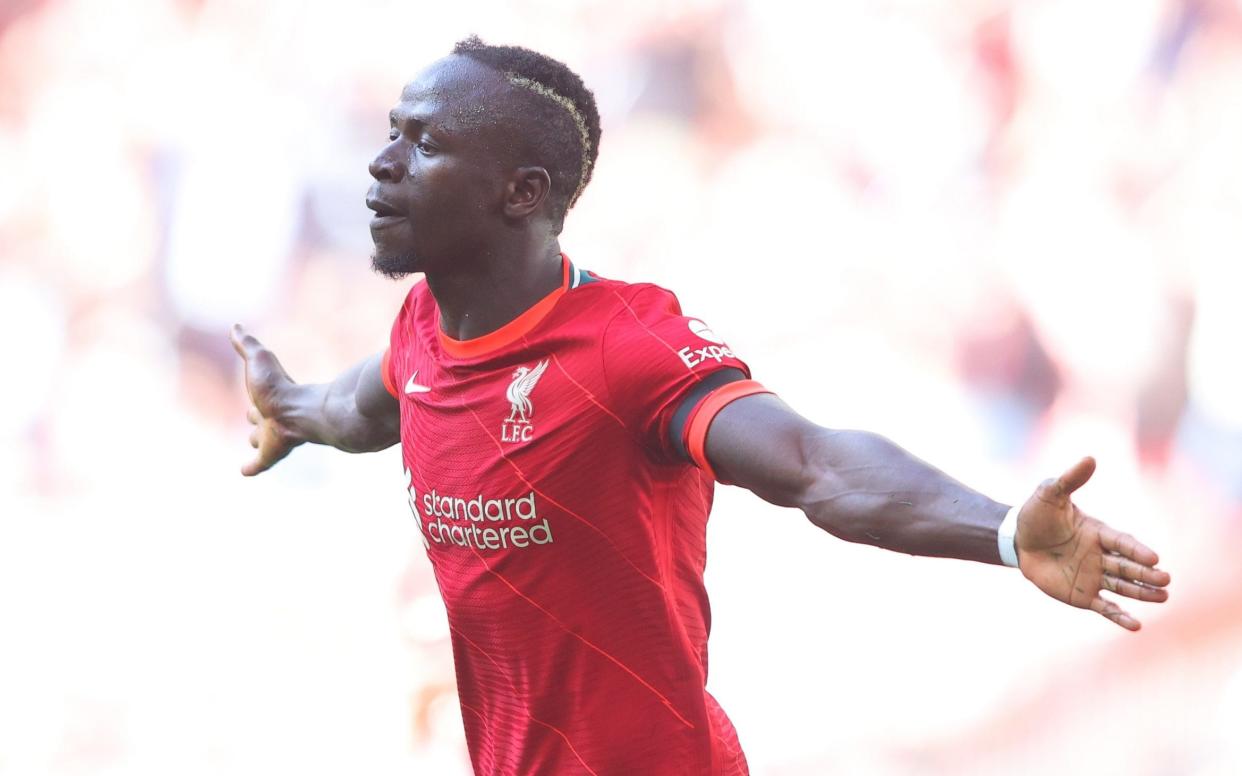Farewell Sadio Mane, one of Liverpool's greatest players of the modern era

On the final day of Liverpool’s Premier League season, the home players formed a guard of honour and the Kop rose to salute the departing striker hailed as a club legend.
Out stepped Divock Origi, deservedly milking the applause of 55,000 spectators for being the master of match-winning cameos, initiator of Barcelona's Champions League decline, and regular slayer of Everton's derby ambitions.
In retrospect, Origi's fond farewell should have had second billing. It is the transfer of Sadio Mane that will truly represent the end of one of the greatest Liverpool careers of the modern era.
Unfortunate timing prevented Mane receiving the personal Kop ovation he deserves and will belatedly get should Liverpool be paired with Bayern on a European night in the near future.
Mane was the first game-changing signing for Jurgen Klopp at Anfield, as pivotal to the start of his reign as Ian St John to Bill Shankly - a fearless all-action striker whose signing was the catalyst for future glories. Retrospective wisdom blurs memories of Liverpool’s place in the football pyramid when Mane moved to Anfield in the summer of 2016.
Liverpool had just finished eighth in the Premier League. Some were questioning whether the £33.5 million fee for Mane was overpriced. Others were asking why Mane was moving to an inferior team since his ex-club - Southampton - had just finished three points above Liverpool.
Mane announced himself spectacularly with a goal and scintillating performance against Arsenal and never stopped producing for six years. Of the side which started his debut at the Emirates - a 4-3 win - only Roberto Firmino and skipper Jordan Henderson are still at Liverpool, underlining how transformative Mane’s impact in that first year. For all the medals he won at Anfield it is the foundations Mane helped to put in place inspiring Liverpool back into the top four which elevate his status and place in the club's history. Mane’s first season was shortened by injury, but his 13 goals meant he was named the club’s Player of the Year.
By summer 2017, Liverpool were able to expand their search for high class players with the lure of Champions League football - Mohammed Salah the most significant recruit. Mane was willing to vacate the right attacking role in which he excelled to facilitate the Egyptian goal spree. As Salah dashed to 40 goals, Mane was entitled to feel his selfless contribution was occasionally overlooked. If it bothered him it never showed in his performances.
The attacking ‘fab four’ emerged with Mane, Salah, Firmino and Phillipe Coutinho. When Liverpool relented under Barcelona (and Coutinho’s) pressure to sell him for £142 million in January 2018, sporting director Michael Edwards cannily inserted a clause prohibiting the Spanish side from signing any more Liverpool players for the next three years without paying an £80 million premium on top of their valuation. That was not just because Liverpool had been previously stung with Barca signing Luis Suarez and Coutinho. The club knew Salah and Mane were on the threshold of being world stars.

Liverpool’s attacking trio subsequently joined the pantheon of great attacking partnerships in English football - Barnes, Beardsley and Aldridge in the 1980s; Cole and Yorke in the 90s; Henry, Bergkamp and Pires in the 2000s.
As the Champions League and title-winning team took shape with the signings of Virgil Van Dijk, Fabinho and Alisson Becker, Mane consistently produced in Europe. One of his most memorable goals was against Bayern, embarrassing Manuel Neuer with an audacious, perfectly weighted chip at the Allianz Arena in March 2019. The German side must have been wishing he was theirs ever since.
Such memories ensure that while there is rarely a positive way for a footballer in his prime to leave a club such as Liverpool, once the contracts are exchanged Mane can anticipate showers of goodwill from the supporters he delighted.
And yet the Ian St John reference carries as much weight with Mane’s exit as it did his arrival.
The surest sign of a well run football club is how well they recruit. It is equally true that the most savvy operators intuitively sense the right time to let the stars go, maximising value when a player is still surveying the scene at the top of the hill rather than the other side of it.
Liverpool were adept at that in the 60s, 70s and 80s, losing their way in the years immediately preceding Fenway Sports Group’s takeover when some of the biggest salaries were dished out to players in their early 30s who were past their prime.
Liverpool have calculated that investing in 22-year-old Darwin Nunez on a £140k a week salary is smarter than giving a 30-year-old on £180k a week a significant pay rise. They hoped Mane would re-sign, but were not prepared to repeat the mistakes of the past to make it happen.
Time will tell if Nunez can make as much of an impact as Mane. He will be worth every add-on in that £85 million deal if he does.
For the foreseeable future, the number 10 jersey will remain vacant at Anfield and whoever wears it next will feel the weight of a shirt Mane wore with such class, humility and distinction.

 Yahoo News
Yahoo News 
